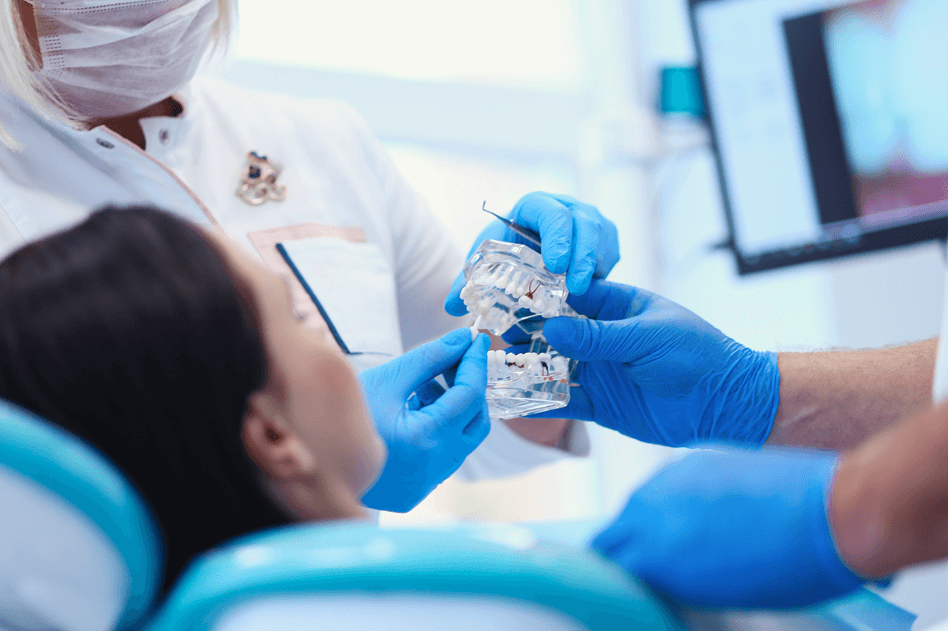
Invisalign has become a must-have cosmetic dental procedure that many people are eager to try. Compared to the outdated method of having to wear uncomfortable metal braces to get a gorgeous, aligned smile, nowadays, more people are excited to try out the Invisalign method. These clear, removable aligners are more comfortable, easy to use, and more importantly, virtually undetectable. However, the million-dollar question still remains. Does Invisalign address all dental issues effectively? Let’s take a closer look.
Understanding How Invisalign Works
For every new set of aligners, the pressure builds and the teeth shift to the next stage of alignment. These clear aligners allow for more freedom of function when compared to traditional, wired braces. You are able to take these aligners out during meal times, brushing and for special occasions.
Invisalign is a popular choice for many since it is subtle, and no one will know you have it on. It is also one of the few orthodontic options you have that allows you to fully maintain your oral hygiene. However, there is a chance that it’s not the best treatment for your problem.
Invisalign and the Problems it Solves
Invisalign addresses many of the common orthodontic issues and does it well.
Mild to Severe Crowding:
Teeth that are overlapping and uneven can be straightened with the aligners. Adults who never had the opportunity to wear brackets as children have the chance to improve their self-esteem and fix crowding with the aligners, avoiding the social and professional stress that comes with wearing metal braces.
Gaps Between Teeth:
Having no teeth and having gaps can be a source of anxiety for many. Invisalign is a discreet option to fix this problem.
Overbite and Underbite:
Invisalign can be a solution if your upper teeth cover too much of your lower teeth (overbite), and even if your lower teeth extend beyond your upper teeth (underbite). These aligners will only be effective for bite issues of a little to moderate severity. Extreme bite issues will most likely also need to be treated with traditional braces, and in some cases, even surgery.
Crossbites and Open Bites
Invisalign can fix crossbites and open bites. A crossbite happens when the upper and lower teeth don’t align properly, and an open bite happens when the teeth don’t touch when the mouth is closed. If crossbites and open bites are not treated, uneven tooth wear and discomfort in the jaw could occur.
Invisalign improves most people’s smiles, and usually does it in a way that is quicker and more comfortable than they anticipated.
Severely Rotated or Tipped Teeth
Invisalign are able to provide enough force to move a tooth that is rotated or positioned in a very difficult place.
Major Bite Corrections
Some deep overbites, open bites, or skeletal issues concerning jaw structure, rather than just teeth alignment, would require possible jaw surgery. This is because Invisalign does not reposition the jaw; it focuses on tooth movement.
Short or Round Teeth
If your teeth are very short, Invisalign aligners may have difficulty gripping them properly. For such cases, attachments (small tooth-colored bumps) are put on the aligners to help control the movement. Even with this, the success of the case can be ambiguous.
Severe Spacing or Crowding
With extreme cases of crowding or very large gaps, the precision of movement that can be achieved with Invisalign.
The Role of Your Dentist
As with any other Advanced Dentistry Clinic, the starting point for “invisible braces” or more properly, “Invisalign” treatment, should be with an initial consultation. This involves “DentAesthetica Dental Clinic” in Gurgaon to use digitalised scanned images and “3D imaging” to create a virtual model of your teeth. You are able to visualise and “see” how your smile is going to change at the end of your treatment. This is motivating, isn’t it?
Once your aligners are ready, you must wear them for at least 20 to 22 hours a day to achieve the intended results in the best time frame possible. Your progress will be monitored on a regular basis, and necessary modifications will be made. There is no middle ground with this system of aligners. Contacting your dentist? Yes! Over the prescribed time, it must be worn. There will be no result if it is not worn at all. Delays will occur if hours or days are not adhered to the prescribed plan.
At DentAesthetica, we hear from many patients about the comfort and ease that comes with using Invisalign. It works wonders for working professionals and students who want to avoid the awkwardness of metal braces on their teeth during meetings or in photographs. Invisalign is a blessing in disguise.
What are the Advantages of Invisalign
Invisalign braces are designed to be comfortable and are frictionless. You will not be dealing with annoying metal braces that stick out of your mouth or with the nonsense of a restricted diet. Just remove the aligners during meal times and save the worry about your food.
Your mouth is the best tool for cleaning your braces, and that should always be your preferred method. It is an oral urban legend that braces cause bad plaque. While that is not true with traditional metal braces, we certainly do not want children thinking about urban legends with braces.
One of the best things about Invisalign is the fact that no one will suspect that you are undergoing treatment.
Can Invisalign Fix All My Dental Problems?
Invisalign is the best option for those who have mild-moderate to severe alignment and bite issues that need treatment. While there are certainly worse, complex cases that need to be treated with traditional metal braces, you will certainly find a place for comfort that comes with alloy-free, modern braces.
To learn more about Invisalign and determine your eligibility for the treatment, it’s best to consult a dentist or orthodontist. At DentAesthetica in Gurgaon, our professionals will examine your teeth and listen to your treatment objectives before determining if Invisalign is suitable for you. As a reminder, every smile is one of a kind, which means the treatment should be one of a kind as well.
If you’ve been fantasizing about a straighter smile, the thought of getting metal braces might be a cause for concern. *Invisalign* is your perfect match. Take the first step toward that smile; you’ve more than earned the self-assurance it will bring you.
Frequently Asked Questions (FAQs)
1. How long does the treatment take?
Each treatment is different and depends on the severity of the misalignment. Minor corrections will take less than 6 months. However, more detailed alignments will take anywhere from 12 to 18 months. This is the treatment timeline your dentist will let you know during your appointment.
2. Is it painful?
Invisalign is actually one of the most comfortable orthodontic treatment options. It is common to feel pressure or tightness for a few days after switching aligners. This tight feeling is actually a sign that your treatment is progressing, and it will ease after a few days.
3. Can I eat and drink with Invisalign on?
Whenever you have a snack or meal, you should definitely take out your aligners. You can also drink anything other than water, and you should take out your aligners. You should drink water with your aligners to keep them clean, but remove your aligners during all other meals and drinks. This will help keep your aligners and your teeth clean. Don’t forget to brush and rinse your mouth before putting your aligners back on.
